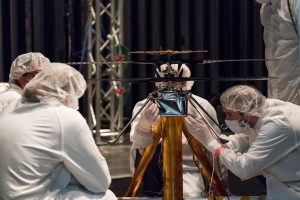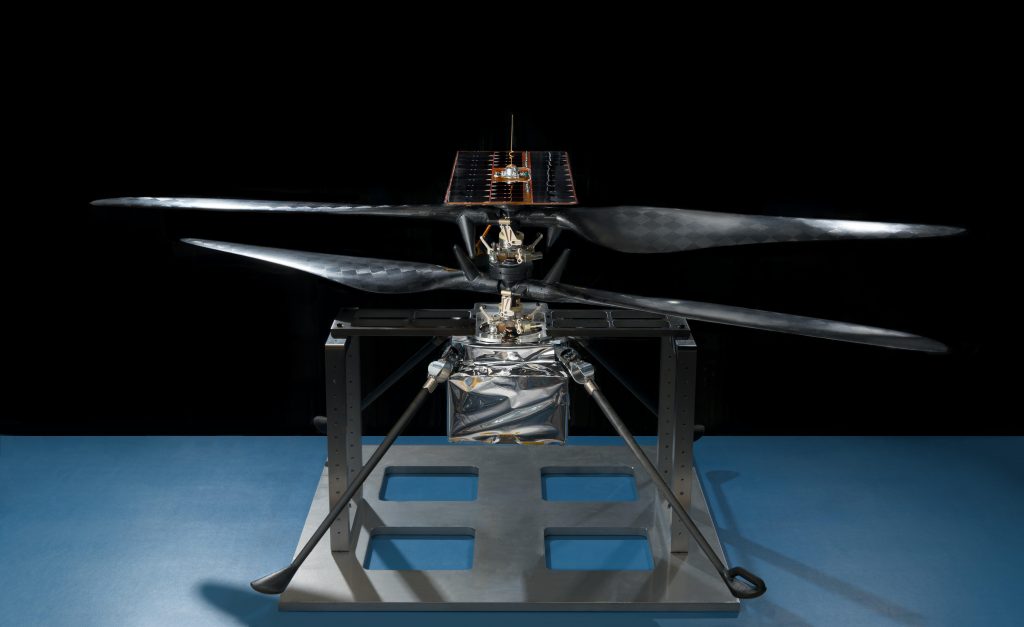NASA’s Jet Propulsion Laboratory (JPL) has conducted extensive tests on a novel mini helicopter that they are planning to send to Mars. Going a step further from the computer simulations and the individual part testing that has been the case thus far, the helicopter was assembled and tested against Martian temperatures (minus 90 degrees Celsius), atmospheric pressure (0.64 kPa), gravity (3.7 m/s2), and the planet’s specific atmospheric composition.
The reason why NASA conducts such rigorous tests on the mini-copter lies on the fact that in 2021, the mini-copter which weighs only 1.9 kilograms will be entrusted with flying autonomously on the distant planet’s surface. There it will aid the Mars 2020 rover on its geological assessment tests, taking pictures of the Red Planet, and helping NASA assess natural resources and potential hazards for future astronauts.
 To create the testing conditions for the Martian mini-copter was a challenge on its own, as no place on Earth is even remotely close. The JPL engineers have used a special vacuum chamber that has been utilized for vehicle testing and performance verification in historical past missions such as the Voyagers and the Cassini. The team sucked out all the gases that make up Earth’s air, such as the oxygen and nitrogen, and injected carbon dioxide (CO2) inside. For the gravity simulation, the team used a high-precision lanyard attached on the top of the mini-copter, steadily abstracting two-thirds of Earth’s gravity with accuracy.
To create the testing conditions for the Martian mini-copter was a challenge on its own, as no place on Earth is even remotely close. The JPL engineers have used a special vacuum chamber that has been utilized for vehicle testing and performance verification in historical past missions such as the Voyagers and the Cassini. The team sucked out all the gases that make up Earth’s air, such as the oxygen and nitrogen, and injected carbon dioxide (CO2) inside. For the gravity simulation, the team used a high-precision lanyard attached on the top of the mini-copter, steadily abstracting two-thirds of Earth’s gravity with accuracy.
During these first test flights, the mini-copter only took off by two inches above the surface, which was enough for NASA’s engineers to do their measurements and determine the airworthiness of their conception. On Mars, the mini-copter will be called to carry out short-term 90-second flights to sweep the area around the rover when the weather permits.
Image credit: NASA/JPL-Caltech






